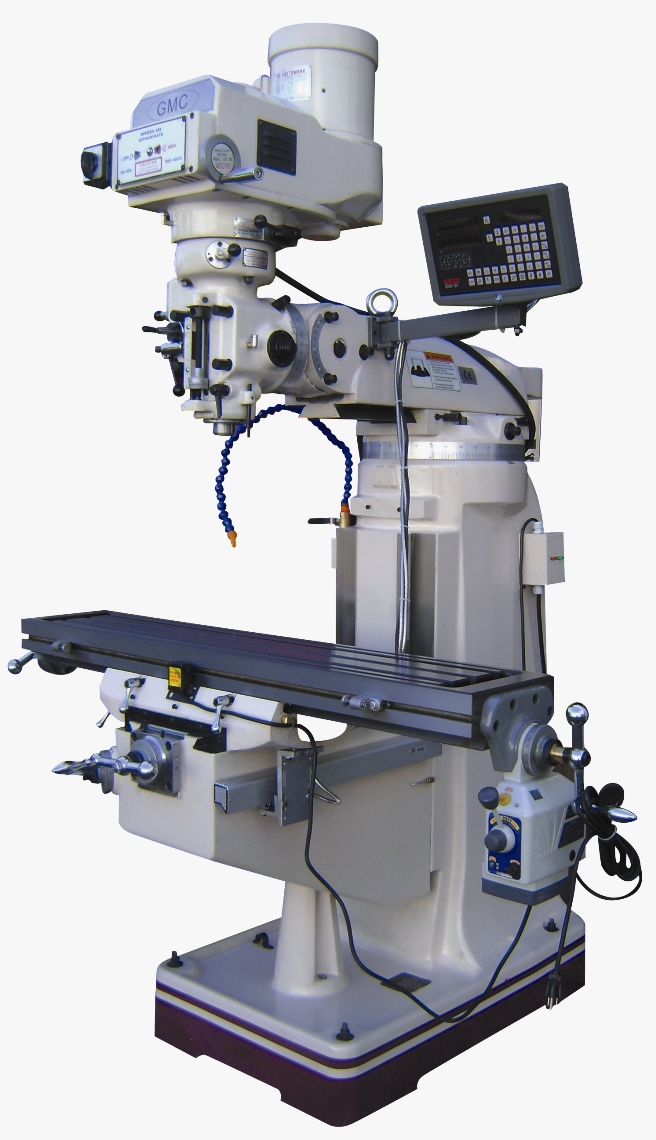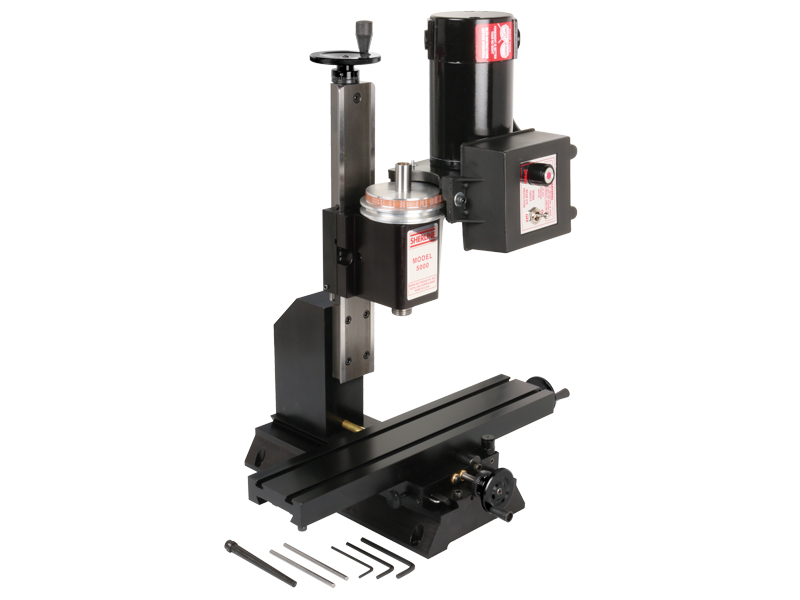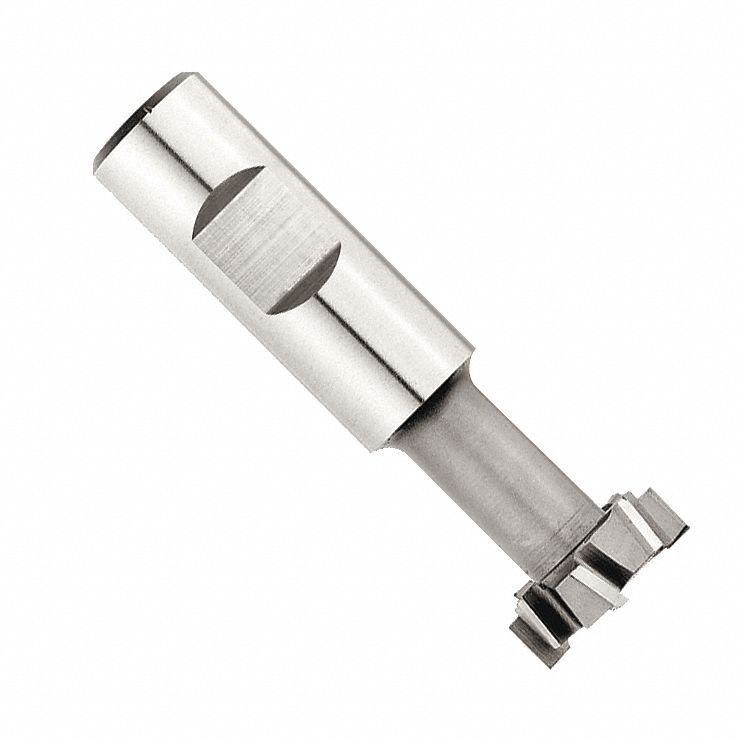Prior to discovering special-toothed wedges, I used 5/8 ' dowel pins as backstops in the mill like everybody else. But the wedges fit tightly in a T-slot of any width. You can easily vary the height and even use them for special clamping jobs. Special-toothed wedges are effective as backstops in a mill. Cut the long shanks off your drill chucks. Plain horizontal milling machine in that it is of the ram type; i.e., the milling machine spindle is in a swivel cutter head mounted on a ram at the top of the column. The ram can be moved in or out to provide different positions for milling operations. (2) Ram-type Milling Machines. (a) Description. The ram-type milling machine is. I will just add that milling oversize T-nuts to an exact fit in your machine is possible. But standard 1/2 T-nuts are probably what the mill maker had in mind when he designed the mill. Good quality T-nuts are hardened and will be difficult to cut down with cheap HSS end mills. Milling Machines are very versatile. They are usually used to machine flat surfaces, but can also produce irregular surfaces. They can also be used to drill, bore, cut gears, and produce slots.
Days/Hours:Tuesday, Wednesday, and Thursday, 8 a.m. – 5 p.m.
Upon entering the Manufacturing Lab, please sign in on the clipboard and speak with the lab manager, Clarence Bess, before using the lab equipment to further discuss and develop your project. Don’t forget to sign out when leaving.
The Manufacturing Lab is also home to Limbitless Solutions.

Services
- 3D Printer (located in office) Please send over designs in a STL file. See below for information on how to make a request to use the printer.
- 3 Manual Milling Machines with digital read outs.
- Hurco
- Tri Onics
- Sharp
- Small Computer Numerical Control Milling Machine (Can be programmed to cut to cut aluminum, steel, copper, brass, wood, plastic. Does not cut concrete.)
- Haas VF-2, Milling Machining Center (holds 20 different tools and changes cutters/drills)
- Fadal Machining Center (folds 20 different tools and changes cutters/drills)
- Haas ST-10 Lathe
- Time Master Manual Lathe with digital readout and 5-foot bed.
- MasterCam Lab
- Run a program here before we go to the machine to see how it works. Includes simulator.
- Small supply of stock including wood, aluminum, steel, acrylic and copper.
- WellSaw Horizontal band saw
- DoAll Horizontal band saw
- DeWault cut-off saw (for cutting materials that are heat treated)
- Vertical cut-off saw
- 12-inch Compound Miter Saw (usually for cutting wood)
- Small Lathe, Jet Lathe with a 3-foot bed
- Hardware (screws, nuts, bolts)
- Basic tools
General Rules and Procedures
- Food and drinks are not allowed in the Manufacturing Lab.
- Please sign in and speak with Clarence Bess, lab manager, before entering the lab and working.
- No loose-fitted clothing or jewelry is permitted in the lab.
- Close-toed shoes only.
- Cell phones are permitted in the workspace.
- Clean up after yourself.
- To request a work order and receive a quote for a project, visit machinelab.cecs.ucf.edu and click on request a quote > e2-113-mlserver > orders > add new item. Please allow up to 72 hours for a response.
- Don’t forget to attach your design (preferably in Solidworks) for machining. If the job is to be made on the 3D Printer, save your design as STL Files and then attach.
- Capacity: If no machines running – 20 people. If machines are in use – five people per one instructor. Eye protection needed.
Cost
- Any work completed by the lab manager is $40 an hour. Please see the General Rules and Procedures section, above, for more information on requesting a quote.
- The first half hour of work is free, but you must be present to watch and learn from the lab manager.
- For 3D Printer, the cost is $7/cubic inch for print jobs.
Contact: Clarence Bess, lab manager
machinelab@ucf.edu
(407) 823-1604
Please contact Clarence Bess to schedule tours and events.



Milling Machine Operations :
2. Face milling operation
3. Side milling operation
4. Straddle milling operation
5. Angular milling operation
6. Gang milling operation
7. Form milling operation
8. Profile milling operation
9. End milling operation
10. Saw milling operation
11. Slot milling operation
12. Gear cutting operation
13. Helical milling operation
14. Cam milling operation
15. Thread milling operation
- Fig.illustrates the plain and slab milling operation. It is a method of producing a plain, flat, horizontal surface parallel to the axis of rotation of the cutter.
- This is also called slab milling. This operation produces flat surfaces on the workpiece. Feed and depth of cut are selected, the rotating milling cutter is moved from one end of the workpiece to another end to complete the one pairs of plain milling operation.
- Fig. illustrates the face milling operation. It is a method of producing a flat surface at right angles to the axis of the cutter.
- This operation produces a flat surface at the face on the workpiece. This surface is perpendicular to the surface prepared in plain milling operation. This operation is performed by face milling cutter mounted on stub arbor of milling machine. Depth of cut is set according to the need and crossfeed is given to the work table.
3) Side milling
- Fig. illustrates the side milling operation. It is the operation of the production of a flat vertical surface on the side of a work-piece by using a side milling cutter.
- This operation produces flat and vertical surfaces at the sides of the workpiece. In this operation depth of cut is adjusted by adjusting the vertical feed screw of the workpiece.
- Fig. illustrates angular milling operation. It is a method of producing a flat surface making an angle to the axis of the cutter.
- Angular milling operation is used to produce an angular surface on the workpiece. The produced surface makes an angle with the axis of the spindle which is not a right angle. Production of the ‘V‟ shaped groove is the example of angular milling operation.
5) Gang-milling
- Fig. illustrates the gang milling operation. It is a method of milling utilizing two or more cutters simultaneously having the same or different diameters mounted on the arbor of the milling machine.
- As the name indicates, this operation produces several surfaces of a workpiece simultaneously using a gang of milling cutters. During this operation, the workpiece mounted on the table is fed against the revolving milling cutters.
6) Form milling
- Fig. illustrates the form milling operation. It is, a method of producing a surface having an irregular outline.
- This operation produces irregular contours on the work surface. These irregular contours may be convex, concave, or of any other shape. This operation is done comparatively at a very low cutter speed than plain milling operation.
7) End milling
- Fig. illustrates end milling operation. It is a method of milling slots, flat surfaces, and profiles by end mills.
- End milling operation produces flat vertical surfaces, flat horizontal surfaces, and other flat surfaces making an angle from table surface using milling cutter named as an end mill. This operation is preferably carried out on a vertical milling machine.

8) Profile milling
- Fig. illustrates profile milling operation. It is the operation of reproduction of an outline of a template or complex shape of a master die on a workpiece.
- In this operation a template of complex shape or master die is used. A tracer and milling cutter are synchronized together concerning their movements. Tracer reads the template or master die and milling cutter generates the same shape on the workpiece. Profile milling is an operation used to generate the shape of a template or die.
9) Saw milling
- Fig. illustrates sawmilling operation. It is a method of producing deep slots and cutting materials into the required length by slitting saws.
- Saw milling operation produces narrow slots or grooves into the workpiece using the saw milling cutter. This operation is also used to cut the workpiece into two equal or unequal pieces which cut is also known as “parting off”.
- Fig. illustrates keyway milling operation. keyways for shaft or hub are produced by these operations.
- The operation of producing keyways, grooves, slots of varying shapes and sizes is called slot milling operation. Slot milling operation can use any type of milling cutter like plain milling cutter, metal slitting saw, or side milling cutter. Selection of a cutter depends upon type and size of slot or groove to be produced.
- Fig. illustrates gear cutting milling operation. Spur, helical gears are cut on a milling machine with the help of an indexing mechanism.
- The operation of gear cutting is cutting of equally spaced, identical gear teeth on a gear blank by handling it on a universal dividing head and then indexing it. The cutter used for this operation is cylindrical type or end mill type. The cutter selection also depends upon tooth profile and their spacing.
13) Flute milling
- It is a method of grooving or cutting of flutes on drills, reamers, taps, etc,
14. Straddle Milling Operation
- This is similar to the side milling operation. Two side milling cutters are mounted on the same arbor. Distance between them is so adjusted that both sides of the workpiece can be milled simultaneously. Hexagonal bolt can be produced by this operation by rotating the workpiece only two times as this operation produces two parallel faces of bolt simultaneously.
15. Helical Milling Operation
- Helical milling produces helical flutes or grooves on the periphery of a cylindrical or conical workpiece. This is performed by swiveling the table to the required helix angle, then rotating and feeding the workpiece against revolving cutting edges of the milling cutter. Helical gears and drills and reamers are made by this operation.
T Slot Cutting On Milling Machine Lab Manual Download
16. Cam Milling Operation
- The operation cam milling is used to produce the cam on the milling machine. In this operation cam blank is mounted at the end of the dividing head spindle and the end mill is held in the vertical milling attachment.
17. Thread Milling Operation
- The operation thread milling produces threads using thread milling centers. This operation needs three simultaneous movements revolving movement of cutter, simultaneous longitudinal movement of cutter, feed movement to the workpiece through a table.
- For each thread, the revolving cutter is fed longitudinally by a distance equal to the pitch of the thread. The depth of the cut is normally adjusted equal to the full depth of threads.
18. Fly Cutting :
- Fly cutting, which is also called single-point milling, is one of the most versatile milling operations. It is done with a single-point cutting tool shaped like a lathe tool bit. It is held and rotated by a fly cutter arbor. You can grind this cutter to almost any form that you need, as shown in Figure.
- Formed cutters are expensive. There are times when you need a special form cutter for a very limited number of parts. It is more economical to grind the desired form on a lathe-type tool bit than to buy a preground form cutter, which is very expensive and usually suitable only for one particular job.
19. Drilling :
The milling machine may be used effectively for drilling, since the accurate location of the hole may be secured utilizing the feed screw graduations. Spacing holes in a circular path, such as the holes in an index plate, may be accomplished by indexing with the index head positioned vertically.
Twist drills may be supported in drill chucks fastened in the milling machine spindle or mounted directly in milling machine collets or adapters. The workpiece to be drilled is fastened to the milling machine table by clamps, vises, or angle plates.
20. Boring :
Milling Machine For Sale
- Various types of boring tool holders may be used for boring on the milling machine. the boring tools being provided with either straight shanks to be held in chucks and holders or taper shanks to fit collets and adapters. The two attachments most commonly used for boring are the fly cutter arbor and the offset boring head.
- The single-edge cutting tool used for boring on the milling machine is the same as a lathe cutter bit. Cutting speeds feeds, and depth of cut should be the same as that prescribed for lathe operations.